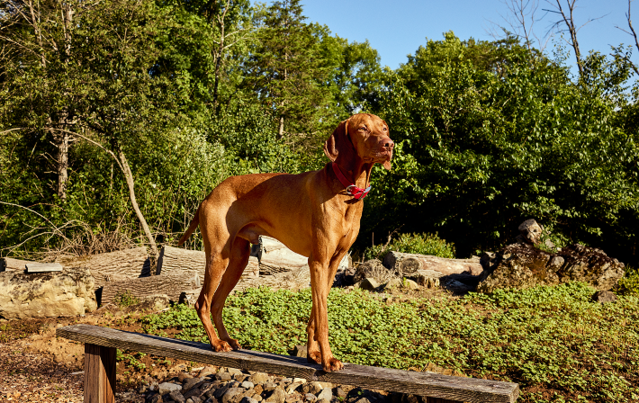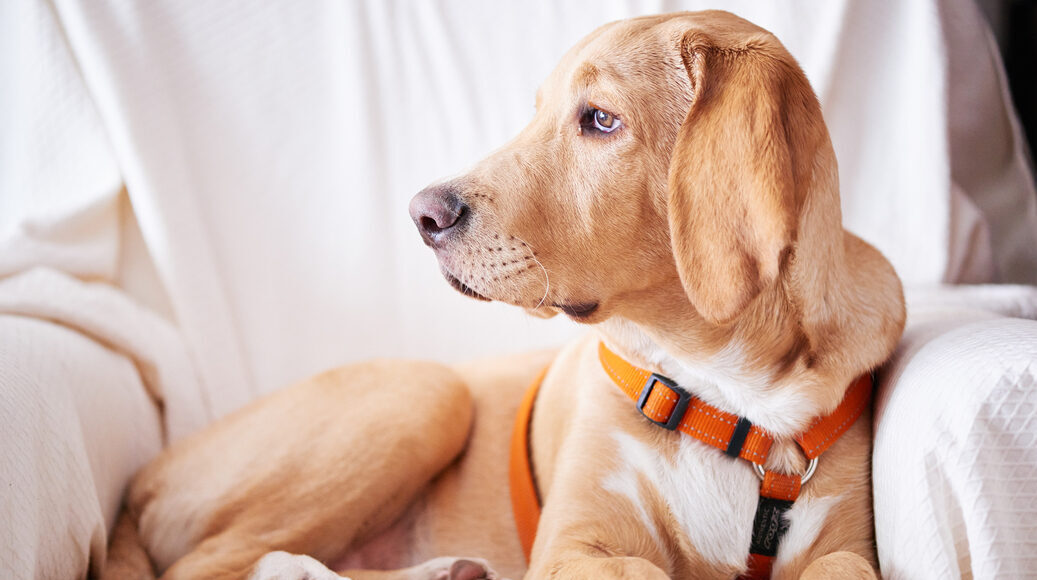
When my fiancée and I received a text last September with a picture of the cutest 5-pound puppy on the planet, we knew he was meant to be ours.
We spent the next three weeks getting ready. We budgeted for vet visits, food, and toys, prepared for our sleep schedule to get thrown out of whack, and accepted that space in our already-undersized apartment was about to become even scarcer. What we didn’t know, however, was that our little bundle of joy would harbor a level of anxiety normally reserved for war vets and bomb squads.
With a dog as anxious as our little Griffey, several facets of life have become slightly more challenging. As we’ve gotten to know him better, we’ve started to pick up some coping methods, but the day-to-day can still be difficult. Here’s a look at our journey.
No New Friends
In all my years of hanging out with my dog-owning friends, I can’t remember a single negative experience. No excessive barking, no fearful nipping, no cowering in the corner; just the privilege of hanging out with someone else’s furry friend for a few hours. It was great – all the benefits, none of the responsibilities. But Griffey is not just any other dog. When a friend comes to our apartment now, it’s a guarantee that Griffey will bark incessantly throughout the entire visit. Our little dude is just distrusting by nature, and even a peace offering in the form of a doggy biscuit fades as soon as the last crumb has been consumed.
The Search for a Sitter
We’ve always bristled at the idea of leaving Griffey in a kennel when we go out of town, so we’ve tried to recruit a few friends to dog sit. This has proven to be difficult, to say the least.
First, we enlisted my brother, Marc, but after three separate weekends Griffey still hadn’t really warmed up to his girlfriend.
This past Memorial Day Weekend, we tried having a sitter stay in our apartment with Griffey. He put her through the ringer, and wouldn’t let her get close enough to leash him until 24+ hours after her arrival. Lesson learned: having Griffey stay at a friend’s place (away from his home turf) seems to be our best bet for now. Historically, his anxiety is worst when someone encroaches on his territory.
Noises + All the Nerves
Strangely enough, this really is just reserved for noises coming from the hall. We live on the ground floor of an apartment building, and the sounds of cars and people just outside our windows are plentiful. For whatever reason, these don’t bother Griffey. If someone gets off the elevator or opens a door down the hall, on the other hand, he’ll bolt up from the deepest sleep, sprint to the door, and bark like a maniac.
In the middle of his barking fit, he’ll stop to look at us with a whimper and a very concerned expression, as though he’s trying to ask us why we, too, are not overwhelmed with dread over the deadly sound coming from the great beyond.
How We Cope…
Just as Griffey’s anxiety is triggered in a number of different ways, the methods we’ve employed to treat his fragile psyche have also been varied.
Take, for example, the trouble we have with friends coming to our apartment. Though we’ve yet to find a lasting solution, we use some combination of the following three techniques:
- First, we bring Griffey out of the apartment before our friends come in and then have them enter in front of Griffey. The idea here is to show Griffey that our apartment is not “his,” and that these strangers entering it before him have just as much right to be there as he does.
- Second, we instruct our guests to ignore him. Everyone’s natural inclination with dogs is to approach, put their hands out, baby talk, etc., but these behaviors all have deleterious effects on nervous dogs like Griffey and rile him up further. Less eye contact, more aloofness.
- Finally, we’ll give our guests a handful of treats to feed Griffey from a distance. If they stay far enough away and toss treats in his direction from across the room, he should eventually associate the unfamiliar person in his space with the treat. After enough reps, he shouldn’t be as scared of the big, bad stranger.
Another common method is desensitization, which is essentially the behavioral equivalent to building up an immunity to poison (Princess Bride, anyone?). You introduce a small amount of a negative stimulus and reward your dog with a really good treat if he’s able to not get riled up. After each successful round, you increase the stimulus ever so slightly (a louder noise, less distance between dog and stranger, etc.) until finally the anxiety is replaced with excitement for the imminent reward.
To sum up, my adorable little rescue pup from the hills of Puerto Rico is a 28-pound ball of anxious energy. He’s nuttier than a squirrel’s cheeks in October, and that tends to wreak large- and small-scale havoc on my life on a daily basis. But he’s also only 11-months old, and my fiancée and I are constantly learning how best to cope with, manage, and eventually help improve his anxiety.
Do you have experience with an anxious dog? What methods have proven most successful for you? Share your story with us below.
Image: @harlowandsage




